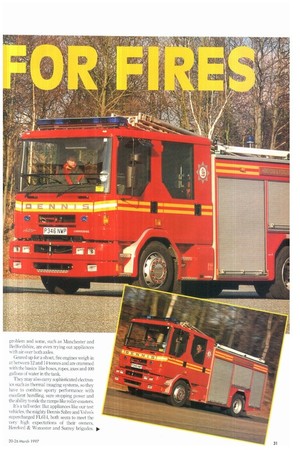T raditional B-type water tenders are the tire service's chariots of
Page 32

Page 33

If you've noticed an error in this article please click here to report it so we can fix it.
choice. When alarms begin their clamour the firefighters have literally seconds to don their clobber and climb aboard. Then, as they prepare to tackle the problem ahead, the driver tries his or her hand at time travel.
There is simply no compromise when life, livestock or property is at risk: it's straight up to full power and lickety-split to the scene pausing only for junctions, roundabouts and that recent estate-road spectre, the speed ramp. Ramps may calm traffic but they also extend journey times and cause horrendous shock loadings to the frame.
Many brigades have opted for air suspension over the rear axle to try to overcome this problem and some, such as Manchester and Bedfordshire, are even trying out appliances with air over both axles.
Geared up for a shout, fire engines weigh in at between 12 and 14 tonnes and are crammed with the basics like hoses, ropes, axes and 400 gallons of water in the tank.
They may also carry sophisticated electronics such as thermal imaging systems, so they have to combine sporty performance with excellent handling, sure stopping power and the ability to ride the ramps like roller-coasters.
It's a tall order. But appliances like our test vehicles, the mighty Dennis Sabre and Volvo's supercharged FL614, both seem to meet the very high expectations of their owners, Hereford & Worcester and Surrey brigades.
















































































































